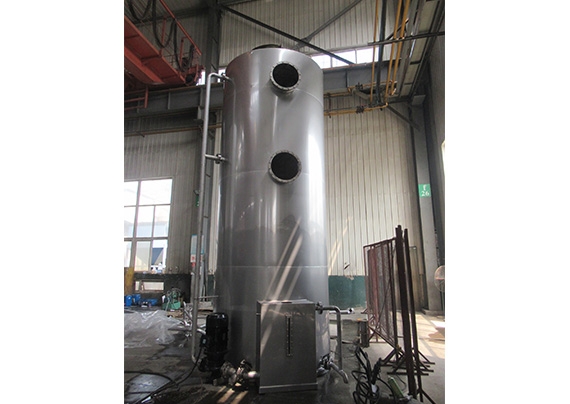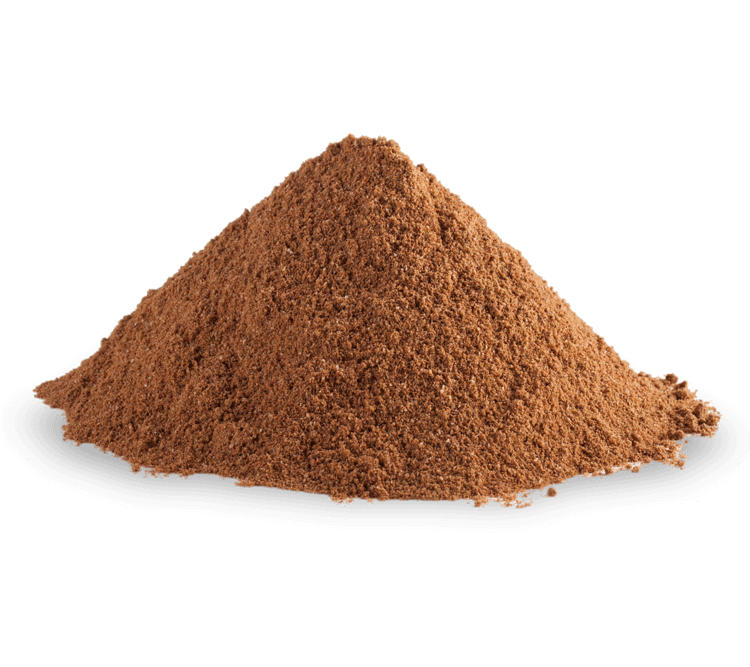
Slaughterhouse Poultry Waste Rendering Plant Uses Chemical Scrubber To Reduce Foul Odors
Slaughterhouse Poultry Waste Rendering Plant Uses Chemical Scrubber To Reduce Foul Odors
What’s The Slaughterhouse Waste Rendering Plant?
Slaughterhouse waste Waste Rendering Plant facilities that process slaughterhouse waste into protein meal and fat. The plant is usually on the same premises as an abattoir or meatpacking plant, and waste from those plants is processed. It uses high-temperature and high-pressure cooking, oil pressing, and other processes to convert some useless waste into valuable commodities.
In addition to slaughterhouses, slaughterhouse waste treatment plants also receive animal byproducts from farms, government agencies and food manufacturers. These include blood, bones, offal (internal organs), hoofs and horns. The byproducts are cleaned and ground up for processing into protein meal or fat. The protein meal can be used as a supplement for farm animals or as an ingredient in pet food. Fats can be used in cosmetics, candles and soaps or sold to soap manufacturers.
The Problem With Slaughterhouse Waste Rendering Plants With Foul Odors
A slaughterhouse waste rendering plant is used to process the slaughterhouse waste. It is a very good idea to use such kind of recycling plants because it reduces the number of animal byproducts in landfills, and also it can produce useful products from this waste material.
If you live near a slaughterhouse or other type of factory that deals with large amounts of animal byproducts, you may have noticed some unpleasant odors coming from the facility. These smells can range from a mild musty smell to something much stronger like ammonia. If you live in an area near several slaughterhouses, it can be difficult to tell exactly where the smell is coming from because each one will add its own unique scent to the mix.
However, there are some bad smells coming from these plants. The foul odor can be really annoying for residents near the facility. In order to reduce this bad smell, you need to use a chemical scrubber for your slaughterhouse waste rendering plant.
What Is The Reason Behind Foul Odors In a Slaughterhouse Waste Rendering Plant?
There are many reasons behind foul odors coming from a slaughterhouse Waste Rendering Plant. Some of these reasons are given below:
1. Exhaust Gas
During the high-temperature and high-pressure cooking process, if the high-concentration waste gas is not collected and treated in a centralized manner, the waste gas will be discharged directly, and the unpleasant smell will be released into the surrounding air, which will have a great impact on the surrounding environment.
In order to solve this problem, Sunrise provides waste organic solvent evaporation systems such as Chemical Scrubber to remove organic solvent from the waste gas. The organic solvent is evaporated by heat energy or chemical reaction and then recovered as a purified liquid. The remaining volatile matter of low concentration can be treated further by adsorption or condensation methods.
2. Waste Water
If there is any wastewater coming out of your plant then this will also cause a foul smell coming from it. You should make sure that there is no waste water coming out of your plant and if there is then use drains and pipes properly so that water does not get accumulated in any corner of your building.
3. Foul Odor
(1) High-concentration waste gas generated during high-temperature and high-pressure cooking.
In the process of cooking, the high-temperature and high-pressure environment will generate a large amount of waste gas. This can cause serious pollution to the environment, so in order to reduce this pollution, Sunrise supply effective filter systems.
(2) Medium-concentration waste gas produced by raw material warehouses, pre-crushers, buffer warehouses, and oil presses during the production process。
(3) Low-concentration exhaust gas in the workshop.
What’s Chemical Scrubber?
The Chemical Scrubber is mainly used to purify the air in slaughterhouse waste-rendering plants. Liquid medicine is used to clean up foul odor gas, and it can play a role in deodorization, purification, and cooling.
The chemical scrubber can remove the odor gas by contact with chemical liquid, so as to achieve the effect of deodorization, purification, and cooling. The liquid medicine that is sprayed into the air will be absorbed by particulates in the air or absorbed by bacteria in it. After absorbing the odor gas, it will be transformed into a harmless substance.
How Does Chemical Scrubber Work?
The chemical scrubber is a kind of high-pressure spray equipment, which is used in many industries such as the chemical industry, metallurgy, and other industries to remove dust, dirt, and other impurities from the air.
The chemical scrubber is a high-pressure sprayer for cleaning and purification of various gases and liquids. Its main feature is that it can be used for both wet and dry cleaning.
The chemical scrubber is mainly composed of nozzles, piping systems, valve systems, and so on. The liquid medicine will be atomized into mist by the nozzle, then passes through the piping system to form bubbles which will contact with odor gas directly. The mist gas mixture will form agglomerates due to gravity force. Finally, fall down by gravity force and form a layer of solid layer on the surface of the tank below.
Why Use Chemical Scrubber?
The smell of a slaughterhouse or rendering plant can be offensive, and it’s no wonder. These facilities process dead animals, which are often not handled with the greatest care. The waste from slaughterhouses includes blood, fat, and bone, as well as internal organs from animals that have been butchered for their meat. In addition, there may be some remains from pets or other animals that were accidentally killed by predators or other accidents.
The stench from these facilities can be overwhelming, even to people who work there every day. It isn’t just unpleasant for humans; it also affects the quality of life for people who live near these plants or businesses that rely on them for their products. That’s why many slaughterhouses invest in chemical scrubber equipment that can help reduce foul odors coming from their operations while still allowing them to do their jobs efficiently and safely.

What Other Machines Can Treat Foul Odors?
Foul odors in slaughterhouse waste rendering plants are a serious problem for the operation of the plant and for the surrounding environment. The plant operator must use different methods to reduce foul odors and make sure that the surrounding environment is not affected by them. In addition to the chemical scrubber, there are also four different types of machines to help reduce foul odors in slaughterhouses. They are:
1. Biological Filter
The biological filter is a self-built building of brick-concrete or steel structure. The filler inside is wood chips, wood blocks, coconut palm, etc., and the bacteria are placed in powdered biological bacteria. The bacteria have strong adsorption capacity and low cost.
The gas is concentrated and recycled to the biological adsorption pool through the negative pressure-induced fan and the exhaust gas-induced fan, and the exhaust gas is absorbed and decomposed through biocatalysis and oxidation, and finally discharged up to the standard.
In the environmental industry, this method has high efficiency and low cost, so it has become the most common method for handling chemical gases in many industries.
2. Condenser
The condenser such as Sunrise Air Cooled Condenser is used to condense the processing steam discharged from the cooking equipment and drying equipment. Water is used as the cooling medium, and the heat of condensation is taken away by the temperature rise of the water.
In the condenser, the steam flows in the tubes, and at the same time, the cooling water flows on the outer surface, using a counter-current arrangement. All connectors are connected by loose flanges.
The condenser can also be used as a heat exchanger when recovering waste heat from the cooking process. The condenser can be equipped with a vacuum tank to reduce the temperature and improve the condensation effect.
3. Exhaust Abatement
For the Exhaust Abatement of livestock and poultry, feather meal, meat meal and animal fat smelting of slaughtering waste protein conversion, etc., the malodorous gas extracted under negative pressure and vacuum conditions is subjected to catalytic combustion and purification treatment.
The harmless treatment of sick and dead livestock and poultry, protein transformation of slaughtering waste (feather meal, meat meal, etc.), animal fat smelting, and other production processes will produce a large amount of malodorous gas, including hydrogen sulfide, methyl mercaptan, amines (ammonia, pentamethylenediamine) and other malodorous organic substances.
In addition, it also contains colorless and odorless methane, hydrogen, etc., and most of these gases are flammable substances. The malodorous gas enters the combustion furnace through the intake pipe. The combustion system adopts the condition of excess oxygen and uses the catalytic combustion treatment process. In an environment of about 750 ° C, the organic matter is fully oxidized and cracked, and burned, and the malodorous organic matter is converted into an easily absorbed substance.
Conclusion
If you’re working for your slaughterhouse, look for ways to eliminate foul-smelling gases. Then it is necessary to build your own exhaust gas treatment system. Air pollution control systems are complex and require expert design, installation, and maintenance.
Sunrise is an expert in this field, has professional and rich experience, and can provide you with better services. Moreover, Sunrise is a rendering plant machine manufacturer, and it will be more favorable to buy Chemical Scrubbers and other equipment from Sunrise.
Sunrise’s products are widely used in poultry farms and feed factories. They are popular with customers at home and abroad for their high quality, reasonable price, convenience operation and low noise level. Sunrise provide complete set of design, fabrication and installation services for customers who want to build their own chicken rendering plant or feed processing line.
Categories
Recent Posts
-

Animal protein meal plays an important role in feed
March 27, 2025 -

Efficient Oil Screw Press for Animal Fat Processing
March 21, 2025 -

What is harmless treatment of sick and dead animals and poultry(rendering plant) A Key Initiative to Protect the Ecological Environment and Food Safety.
March 6, 2025
